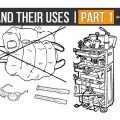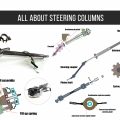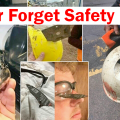When you look for a new car, you must consider its safety ratings.
In 2015, the National Highway Traffic Safety Administration decided to review and make
Changes to the current rating system. These changes include the use of crash tests with
A fifth-percentile female passenger to better understand the safety of rear-seat passengers. There could also be a rating scale for the prevention of crashes. A five-star rating is the best one to have when you buy a new car. Here is Engineering Explained’s take on what that actually means.
Frontal Crash Test Details
In this test, there would be an average
Male-sized male crash test dummy in the front driver seat;
And a small-sized female crash test dummy in the front passenger seat. This test also represents crashes of two cars that are the same size. During the frontal crash test, the car will crash into a structure at 35 mph (ca. 56 km/h).
Side Pole Crash Test
With this kind of crash test, the car is being evaluated to determine;
How it stands up in the event of a side pole crash.
This test generally includes a small-size female driver in the driver’s seat;
And the test car is positioned at a 75-degree angle. The car will be moved sideways into a medium-sized pole.
Insurance Institute for Highway Safety
This is a private nonprofit organization that receives funding from auto insurance companies. The IIHS’s mode of testing is similar to that of the National Highway Traffic
Safety Administration although there are some differences.
Under this organization’s safety testing,
A car’s crashworthiness can be considered good, bad, acceptable, marginal, or poor. The IIHS has a roof strength test. This crash test is accomplished by having a metal plate
Push along the side of the car. There is also an evaluation of head restraint. The seat of the car is put on a sled and this mimics a rear impact. IIHS assigns cars a top safety pick only if they pass all crashworthiness tests. When you buy a car,
You want to consider both the NHTSA and the IIHS’s safety ratings.
The Ratings Are Different Each Year
Another thing to keep in mind is that the safety ratings are not the same each year. A car that received five stars for safety last year might receive three stars this year. Or a car that received two stars a few years ago might receive four stars this year.
The tests are also different nowadays so this could be a factor in
How cars are rated for safety.
Meaning Behind the Scores
If a car gets a five-star rating,
This means that there is a less than 10% chance of a serious injury.
Cars with a four-star rating have an 11-20% chance of a bad injury in them.
If some cars have a three-star rating,
Then this means that there is a 21-35% chance of a serious injury during a crash. If the car has one star, then there is a 46% chance of a critical injury.
Tips on Understanding Car Safety Ratings
Because the scores are based are on competency,
You won’t always be able to determine that a three-star car
Operates better than a four-star one. You also won’t be able to compare ratings across
Different vehicle types because the ratings are based on cars in similar classes.
For example,
It would be difficult to compare the results of an SUV’s crash test with those of a sedan.
Read More:





3 Comments